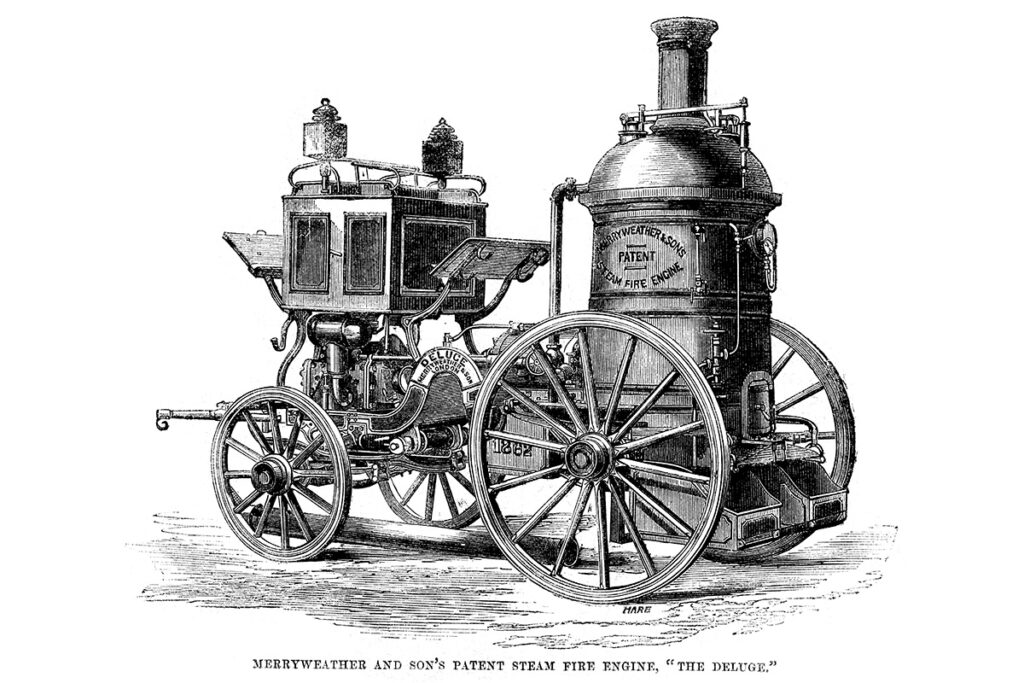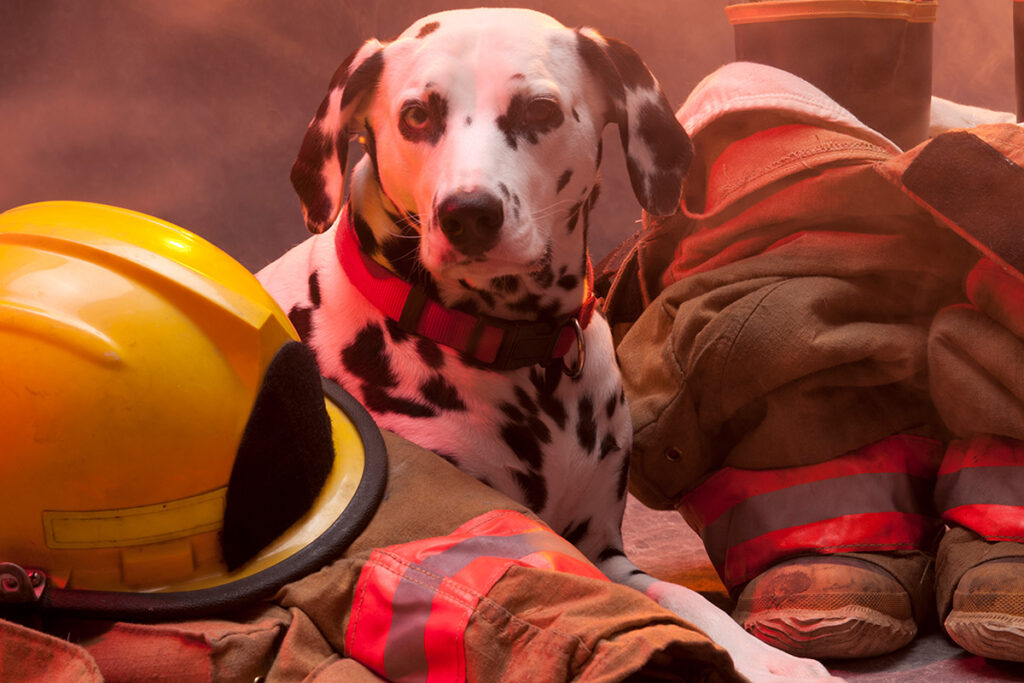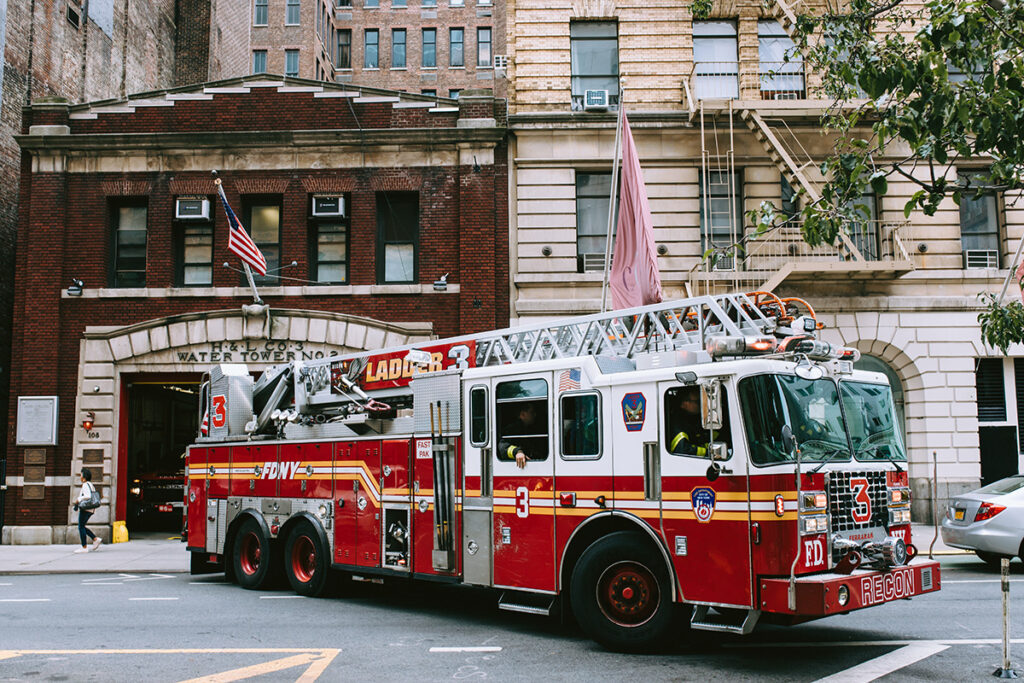Fire trucks are one of our society’s oldest and most recognizable vehicles. But its look and functions have dramatically changed over the years. The fire truck as we know it is the result of centuries of development and innovation.
Here are five interesting things you might not know about the evolution of fire trucks.
Since we’ve discovered fire, we’ve fighting them. We realized early on that you can put flames out with enough water. While some ancient civilizations began creating fire engines, or at least primitive versions of them that were basically huge pumps that shot water out of them, buckets were the most effective firefighting tool for centuries.
The concept of a firefighter began appearing in Egypt and Rome before taking on more formal roles in Europe and colonial America. The first fire company was established in Boston, Massachusetts in 1678.

As fire companies developed, so did our firefighting apparatuses. Designs evolved, and the first patent for a “new water engine for quenching and extinguishing fires” – a horse-drawn contraption – was submitted in England in 1721. The first modern truck design appeared in the 1960s, equipped with tools like water pumps, ladders, and cherry pickers.
There’s a good reason why the Dalmatian is the official firehouse dog.
Dalmatians have been involved with firefighting for more than a century. And while they’re usually just firehouse mascots these days, they used to clear the way for firefighters, serving a critical role in historic firefighting practices.
When horse-drawn carriages were the most popular means of transportation, these dogs used to run alongside the horses and could keep up even when the horse was going full-speed. They’d also keep other animals away from the horses – preventing the horse from getting spooked.

Firefighting companies saw how valuable this could be, so they started using the dogs as sirens. The Dalmations would run out barking as soon as the firehouse opened its doors; letting people know to get out of the way before the firefighter’s wagon rushed out of the station. Then the dogs would run to the scene alongside the wagon, and once there; would guard the wagon so no one would steal anything. The dogs also helped the horses. Horses are afraid of fire – so the dogs would comfort and distract the horses from all the commotion.
The Dalmatians still served a purpose once the automobile was introduced. They’d guard the trucks while the firefighters dealt with the flames. One thing did change though; the dogs would get to ride inside the vehicle instead of having to run alongside it.
Daniel Hayes is considered the inventor of the modern aerial ladder fire truck that revolutionized how ladders were used at fires. In 1868, Hayes designed and mounted an extension ladder to the truck, and created a design that is still in use today.
Hayes served as a firefighter in New York City before moving to San Francisco in the 1860s. While living there, he designed the truck that made his name a firefighting-household name, the Hayes truck. The new design used a spring-assist mechanism mounted to the top of the ladder truck to raise or lower. The design entirely did away with the old hand splice-ladder.

The San Francisco Fire Department bought the Hayes truck for $3,000. But the fire chief at the time was reluctant to use the new contraption. That changed after the Harpending fire in 1871 however; historians say the ladders the crews were using failed miserably, and public pressure pushed the department to finally use the Hayes truck three years after it was purchased.
The Hayes truck was put to the test after being called away from a July 4th parade it was participating in to respond to a nearby fire. Hayes himself took control of his truck and showed the department and the public that his apparatus was far better than the old one as he and the crew successfully battled the fire.
The design is considered so efficient that nearly 300 Hayes trucks are still in service in the United States.
A decade later, another American inventor on the other side of the continent made another major advancement in firefighting design that’s still used today. On May 7, 1878, Joseph Winters patented the fire escape ladder. It was a wagon-mounted fire escape ladder that was attached to a firetruck in the city of Chambersburg, Pennsylvania.
Winters noticed that firemen spent a lot of time taking ladders off the truck to rescue those trapped on the upper floors or reach the flames. He wanted to create something that was easier to raise and was already mounted to the wagon. It also had to be able to collapse so it could be long enough to reach the top floors, but small enough to fit around tight corners.
This invention couldn’t have come at a better time; cities were beginning to grow up instead of out. Buildings were getting taller and streets were getting narrower. Having something that could reach the highest floors and maneuver around turns was critical in saving buildings, city blocks, and lives.
Winters patented improvements to his original design in 1879 and patented a fire escape that could be attached to buildings in 1883. Historians say that while he didn’t receive much money for his inventions, he went on to live a good life in Chambersburg; living to the age of 100 by some accounts, before dying in 1916.
People use the phrases interchangeably, but they aren’t technically the same vehicle.
Modern fire trucks are equipped with very large ladders that extend from the truck but don’t come off. Some of the key components of a fire truck are:
Meanwhile, the fire engines used today pump water and carry the tools firefighters need. Also called pumpers, these vehicles carry hoses, tools, and the water firefighters use on the flames. Engines can also have ladders, but they are set up by the firefighters and can be carried around. The main components of a fire engine are:
One of society’s greatest tools has certainly evolved over the years. To see how police have embraced technology to help fight crime, click here.
Recent Posts
Stay in Touch
Ready to make fleet management more manageable?
Schedule your demo today!